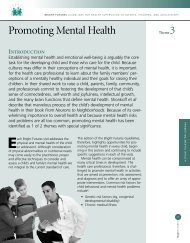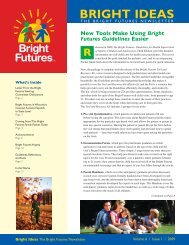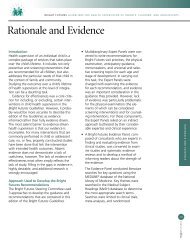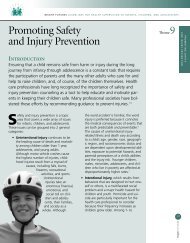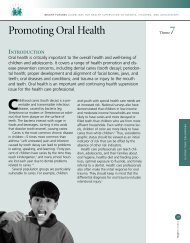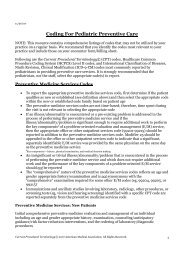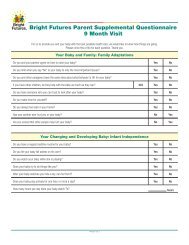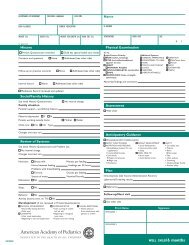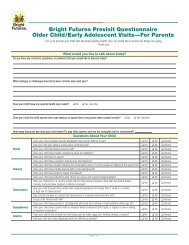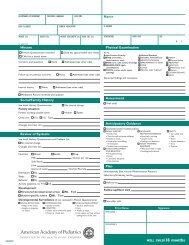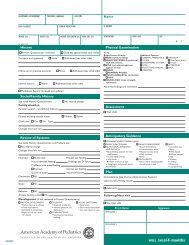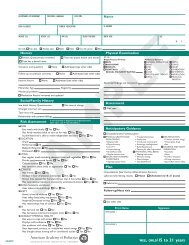POCKET GUIDE - Bright Futures - American Academy of Pediatrics
POCKET GUIDE - Bright Futures - American Academy of Pediatrics
POCKET GUIDE - Bright Futures - American Academy of Pediatrics
Create successful ePaper yourself
Turn your PDF publications into a flip-book with our unique Google optimized e-Paper software.
■■ adolesCenCe<br />
oVerView<br />
Adolescence is a period <strong>of</strong> dramatic physical, cognitive, social,<br />
and emotional changes. This developmental period is divided<br />
into 3 stages.<br />
Early adolescence (ages 11–14). Adolescents are characterized<br />
by pubertal changes and a growing capacity for abstract<br />
thought, although concrete and oriented toward the present.<br />
Middle adolescence (ages 15–17). Adolescents are characterized<br />
by independence, experimentation, future-oriented<br />
thinking, and problem-solving abilities.<br />
Late adolescence (ages 18–21). This stage is a time <strong>of</strong> important<br />
personal and vocational decisions and refined abilities to<br />
reason logically and solve problems.<br />
growth and Development<br />
■ Adolescents achieve the final 15% to 20% <strong>of</strong> their adult<br />
height and gain 50% <strong>of</strong> their adult weight.<br />
■ Adolescents accumulate up to 40% <strong>of</strong> their skeletal mass.<br />
■ Nutrient needs are greatest during peak periods <strong>of</strong><br />
growth (sexual maturity rating [sMr] 2–3 in females,<br />
3–4 in males).<br />
■ Females complete most physical growth about 2 years after<br />
menarche. Mean age <strong>of</strong> menarche is 12.5 years.<br />
■ Males begin puberty about 2 years later than females.<br />
■ Males experience major growth spurts and increases in<br />
muscle mass during middle adolescence.<br />
■ Cognitive capacities increase dramatically during<br />
adolescence.<br />
■ Developing an identity and becoming an independent<br />
young adult are central to adolescence.<br />
eating<br />
■ Foods can have symbolic meanings. Adolescents may use<br />
them to establish individuality and express their identity.<br />
■ Adolescents may adopt certain eating behaviors (such<br />
as vegetarianism) to explore various lifestyles or to show<br />
concern for the environment.<br />
■ interest in new foods, including those from different cultures<br />
and ethnic groups, is common during adolescence.<br />
■ Adolescents spend more time away from home and eat<br />
more meals and snacks away from home than when they<br />
were younger. Many adolescents go to stores and fast-food<br />
restaurants and purchase food with their own money.<br />
45<br />
<strong>Bright</strong> FUTURES<br />
Adolescence



